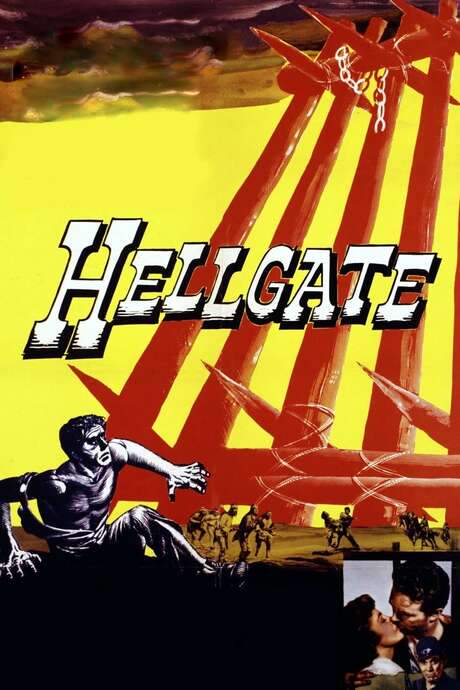
Hell’s Kitchen
Year: 1939
Runtime: 81 mins
Language: English
Directors: Lewis Seiler, E.A. Dupont
A paroled convict takes a job at a boys' reform school, determined to clean up the corrupt environment. His attempts to raise standards alarm the warden, who has been siphoning school funds. The warden devises a scheme to sabotage the convict’s reforms, framing him for crimes and imposing a crackdown on the inmates to hide his embezzlement.
Warning: spoilers below!
Haven’t seen Hell’s Kitchen yet? This summary contains major spoilers. Bookmark the page, watch the movie, and come back for the full breakdown. If you're ready, scroll on and relive the story!
Timeline & Setting – Hell’s Kitchen (1939)
Explore the full timeline and setting of Hell’s Kitchen (1939). Follow every major event in chronological order and see how the environment shapes the story, characters, and dramatic tension.
Last Updated: October 04, 2025 at 18:01
Main Characters – Hell’s Kitchen (1939)
Meet the key characters of Hell’s Kitchen (1939), with detailed profiles, motivations, and roles in the plot. Understand their emotional journeys and what they reveal about the film’s deeper themes.
Last Updated: October 04, 2025 at 18:01
Major Themes – Hell’s Kitchen (1939)
Explore the central themes of Hell’s Kitchen (1939), from psychological, social, and emotional dimensions to philosophical messages. Understand what the film is really saying beneath the surface.
Last Updated: October 04, 2025 at 18:01
Unlock the Full Story of Hell’s Kitchen
Don't stop at just watching — explore Hell’s Kitchen in full detail. From the complete plot summary and scene-by-scene timeline to character breakdowns, thematic analysis, and a deep dive into the ending — every page helps you truly understand what Hell’s Kitchen is all about. Plus, discover what's next after the movie.
Hell’s Kitchen Summary
Read a complete plot summary of Hell’s Kitchen, including all key story points, character arcs, and turning points. This in-depth recap is ideal for understanding the narrative structure or reviewing what happened in the movie.

Similar Movies to Hell’s Kitchen
Discover movies like Hell’s Kitchen that share similar genres, themes, and storytelling elements. Whether you’re drawn to the atmosphere, character arcs, or plot structure, these curated recommendations will help you explore more films you’ll love.
Explore More About Movie Hell’s Kitchen
Hell’s Kitchen (1939) Plot Summary & Movie Recap
Hell’s Kitchen (1939) Scene-by-Scene Movie Timeline
Hell’s Kitchen (1939) Spoiler-Free Summary & Key Flow
Movies Like Hell’s Kitchen – Similar Titles You’ll Enjoy
Hellion (2014) Plot Summary & Ending Explained
The Kitchen (2019) Film Overview & Timeline
In Hell (2003) Complete Plot Breakdown
Hell High (1987) Plot Summary & Ending Explained
Hell’s House (1932) Spoiler-Packed Plot Recap
Hell Is a City (1960) Film Overview & Timeline
Hell Bent (1994) Spoiler-Packed Plot Recap
Hell on Frisco Bay (1955) Story Summary & Characters
Hell Bound (1957) Story Summary & Characters
Private Hell 36 (1954) Movie Recap & Themes
Hellgate (1952) Plot Summary & Ending Explained
Short Cut to Hell (1957) Full Summary & Key Details
Hell Drivers (1957) Movie Recap & Themes
Hell’s Highway (1932) Film Overview & Timeline
The Mayor of Hell (1933) Plot Summary & Ending Explained

















